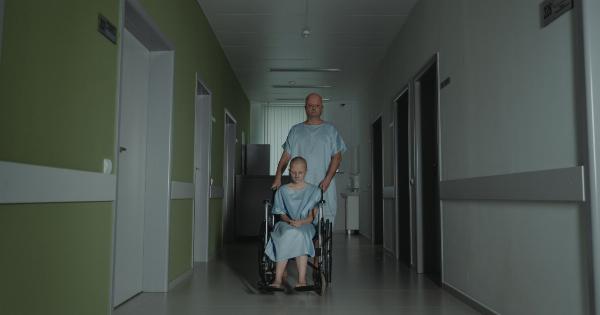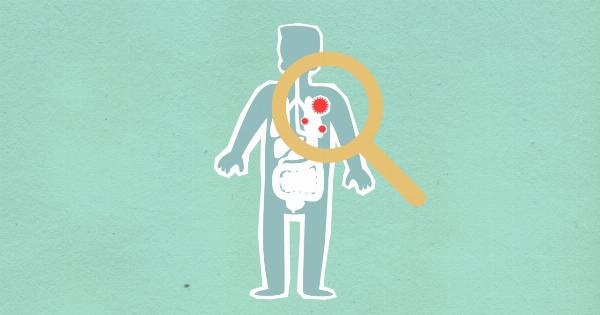Every year, we lose a staggering 11 million healthy years from our lives. This loss has far-reaching consequences, affecting individuals, communities, and even entire nations.
It threatens our well-being, hampers economic growth, and puts immense strain on healthcare systems. In this article, we will explore the consequences of losing 11 million healthy years each year, delving into the impact on both the individual and society as a whole.
The Burden of Disease
The loss of 11 million healthy years each year can be primarily attributed to the burden of disease. This includes both communicable and non-communicable diseases, as well as injuries.
Communicable diseases such as malaria, tuberculosis, and HIV/AIDS continue to take a heavy toll on populations, particularly in developing countries with limited access to healthcare services and preventive measures.
Non-communicable diseases such as cardiovascular diseases, cancer, and diabetes also contribute significantly to the loss of healthy years.
These diseases often stem from modifiable risk factors such as poor diet, smoking, physical inactivity, and alcohol abuse. They not only shorten individual lives but also lead to years of disability and reduced quality of life.
Individual Consequences
For individuals, losing 11 million healthy years each year has profound consequences. People who are affected by disease or disability are often unable to fully participate in society, hindering their personal and professional development.
Chronic illnesses can lead to ongoing pain, limited mobility, and a decreased ability to engage in daily activities, causing immense physical and emotional suffering.
In addition to the physical and emotional toll, individuals often face financial hardships as a result of losing healthy years.
The cost of medical treatment, medication, and rehabilitation can be astronomical, pushing families into poverty and perpetuating a cycle of poor health and economic vulnerability. Furthermore, individuals who are unable to work or are limited in their work capacity due to illness or disability experience a loss of income, further exacerbating the financial strain.
Psychologically, the loss of healthy years can lead to feelings of hopelessness, depression, and anxiety.
Individuals may struggle to cope with the limitations imposed by their health conditions, leading to a decreased sense of self-worth and self-esteem. The social stigma often associated with certain illnesses and disabilities can compound these psychological challenges, isolating individuals and hindering their ability to seek support and assistance.
Social Impact
The loss of 11 million healthy years each year also has significant social consequences. A society that is plagued by disease and disability is hindered in its progress and development.
The potential of individuals to contribute to economic growth and productivity is curtailed, resulting in a loss of human capital and reduced innovation.
Communities bear the burden of caring for individuals affected by disease and disability, placing strain on already limited resources.
Healthcare systems become overwhelmed, resulting in longer waiting times, reduced access to care, and diminished quality of services. This, in turn, perpetuates health disparities, as those with more resources can afford better healthcare and treatment options, while marginalized populations are left to suffer the consequences of limited access.
Furthermore, the loss of healthy years can lead to increased healthcare expenditures. The cost of treating and managing diseases and disabilities places a significant burden on healthcare systems and government budgets.
These funds could otherwise be allocated to preventive measures, infrastructure development, and social welfare programs that improve the overall well-being of a society.
Economic Implications
The loss of healthy years also has far-reaching economic implications. Individuals who are affected by illness or disability often face reduced productivity and limited educational opportunities, preventing them from reaching their full potential.
This results in a loss of human capital and a decrease in workforce productivity.
Furthermore, the cost of healthcare and the impact on the labor market can be substantial. Companies may experience increased absenteeism, reduced work hours, and a decrease in the overall productivity of their workforce.
The burden of healthcare costs also affects businesses, as they often bear a significant portion of these expenses through employee healthcare benefits.
Economies that are burdened by the loss of 11 million healthy years each year may struggle to attract investment and create stable economic growth.
The health of a population is closely linked to economic development, with healthy individuals being more likely to actively contribute to and participate in the workforce. A chronically ill or disabled population, on the other hand, hampers economic progress and perpetuates cycles of poverty.
Addressing the Consequences
While the consequences of losing 11 million healthy years each year are significant, there are steps that can be taken to address and mitigate these issues.
Investing in preventive healthcare measures, such as promoting healthy lifestyles, providing access to vaccination programs, and implementing effective public health campaigns, can help reduce the burden of disease.
Prioritizing universal healthcare and improving healthcare infrastructure can ensure that individuals have access to quality care without facing financial hardships.
This includes strengthening primary healthcare systems, training healthcare professionals, and expanding coverage for essential services.
Efforts to address the social and economic implications of losing healthy years should also be prioritized. This includes implementing policies that promote inclusive societies and reduce stigma associated with certain health conditions or disabilities.
Investing in education and vocational training programs can improve workforce productivity and increase opportunities for individuals affected by illness or disability.
Conclusion
The consequences of losing 11 million healthy years each year are profound and wide-ranging. From the individual level to society as a whole, the impact is felt in physical, emotional, social, and economic realms.
Addressing this loss requires a multifaceted approach that prioritizes preventive healthcare, strengthens healthcare systems, and tackles the social and economic barriers faced by individuals affected by illness or disability. By investing in the health and well-being of our populations, we can reduce the burden of disease and create a more prosperous and equitable society for all.





























